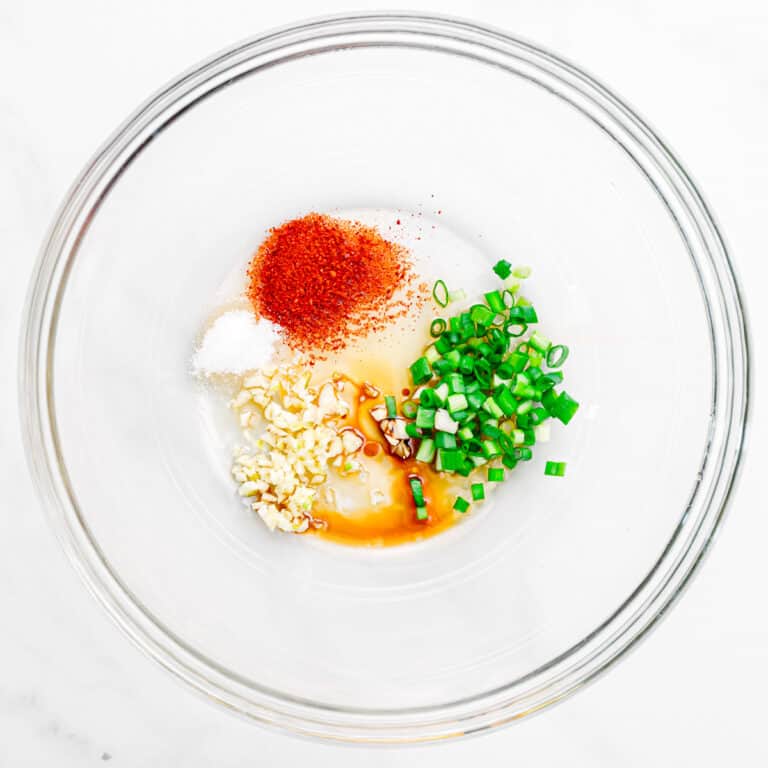
I never ate tofu growing up, so buying it isn’t even on my radar.

I picked up the bean sprouts no problem and then I focused on the tofu. He has always been the one to make the bean sprout soup (콩나물국), so I had to think carefully about what ingredients I would need to bring home. I decided I wanted to eat some bean sprout soup.

This week was busy for him and I ended up at the market by myself. I make sure we have something from all of the food groups while he keeps a watchful eye on the cost and comments when items are more costly than usual, in which case we’ll leave them be and focus on other vegetables or fruits. It’s something we started after we moved in together for some reason or another, a major reason probably being that we don’t have a car and four hands carrying home groceries is always going to be better than two and that he’s Korean so reading labels and signs on things I’m not sure of is his job. On any normal week, my husband and I will head to the market together bringing along our bags and leaving behind our phones. (This post contains affiliate links, which means I receive a certain percentage of a sale if you purchase after clicking at no cost to you. Suffice to say, I’ve eaten in and outside of the home so many times, I was shocked to create a boisterous hubbub at the farmer’s market this week when I simply asked the nearby ajjumma if I had the right tofu for the soup. We use bean sprouts for all kinds of things with the most popular being the sesame bean sprout side dish. It’s a meal that is pretty easy for most people to eat, and since soybean sprouts are a staple Korean vegetable, you can eat it and find it year round without fail. Ed.Bean sprout soup, or kongnamulguk (콩나물국), is a simple broth soup that you will find at restaurants around the country, a specialty of Jeonju, and in homes too. She shares her recipes and food memories in her blog, Beyond Kimchee. Hye-gyoung Ford (aka Holly) is a well-known Korean food blogger and the author of “Korean Cooking Favorites.” Born and raised in Korea, she has lived in many countries. Taste the salad and add more salt if needed. Toss the salad with your hand or using kitchen tongs to mix well.ĥ. Add garlic, green onion, Korean soy sauce, sesame oil, toasted sesame seeds, and a pinch of salt. Place the warm sprouts in a large mixing bowl. Drain the spouts in a colander to remove the extra water and let cool for a couple of minutes.Ĥ. Stir and turn the sprouts so that the ones on the bottom come to the top and the ones on the top end up on the bottom, and wait for 30 seconds.ģ. Remove the pot from the heat and open the lid. If you have a glass lid, you will see the steamed water drips down under the lid.Ģ.

Close the lid tightly and let the sprouts cook over medium heat for 6 minutes. Put sprouts in a pot and pour in 4 tablespoons of water.

2 tsp Korean soup soy sauce (gukganjang)ġ. Korean people never get tired of making this delicious side dish with soybean sprouts. Whether you grow your own sprouts or buy them at the store, they are inexpensive. Some people grow their own soybean sprouts at home so that they can eat the sprouts anytime they want. For that reason, Koreans call it a “national side dish of Korea (gukmin banchan)” because every household consumes this bean sprout Korean side dish at least once a week. It is perhaps the most common Korean side dish of all. We call this soybean sprout side dish, kongnamul muchim in Korean. This salad side dish recipe is easy to make and is one of the many healthy banchan, Korean side dishes, that can accompany any Korean or Asian meal. It has a crunchy texture and nutty taste. This Korean bean sprout side dish is made with soybean sprouts.


 0 kommentar(er)
0 kommentar(er)
